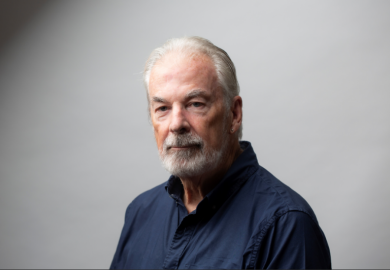The rise of world archaeology has been one of the great advances over the past 20 years, ever since Peter Ucko's groundbreaking conference in Southampton in 1986. The first World Archaeological Congress (WAC) was unique and contentious for many reasons but its enduring legacy has included giving a voice to the indigenous peoples of the world whose heritage hitherto had been almost the sole domain of white researchers with a Western rather than a native agenda. Today, many congresses later, a testament to the vision and energy of all involved with the first WAC, an astonishing number of books has emanated from these meetings, published by Routledge as the One World Archaeology series.
Not only has archaeology and archaeological publishing been transformed by these events, but "world archaeology" is now a meaningful concept rather than a peripheral activity for archaeologists and others who work solely or mainly beyond the frontiers of Europe, Egypt or the United States, or with indigenous peoples who are sometimes also ethnic minorities.
Today, the intellectual and moral case for world archaeology is firmly fixed in academia and elsewhere, and it is sometimes difficult at this remove to wonder what some of the fuss was about. This is surely one sign of success. Another is the public's acceptance of and willingness to embrace a global archaeology. This is illustrated by the launch of Current World Archaeology , a new popular magazine from the same stable as the long-established Current Archaeology and masterminded by the same editor-in-chief, Andrew Selkirk.
The magazine lives up to its billing. Its first five issues include topics as diverse as Ephesus, the native ball game of the Caribbean, a royal fort in the Hindu Kush, Pompeii, South African rock art, Troy, the Silk Road city of Merv in Turkmenistan and Peking Man. The quality of these main articles is uniformly high as most contributors are recognised specialists, although the editorial team also contributes well-written and insightful pieces. The quality of the photos is also good, as are the plans and maps, and each issue has the feel of a well thought-out and professionally put together piece of work.
So far so good, but what I found most interesting were the extra flourishes that the editors have introduced into the format. Dealing with a world archaeology means more than producing a set of leading and glossy articles on major sites or topics; it also requires a flexible format for smaller, less well-known places, people and events. Selkirk and his team have responded to this need by interspersing smaller, more personal and topical contributions in the form of a "Letter from..." format and a "World Archaeology News" section.
In the first issue, a dramatic and timely photograph kicks off the venture in a way that is symbolic of a new kind of archaeology: that of conflict and its aftermath. A US army tank is seen lurking in the shadows of the Children's Museum in Baghdad - a supremely ambiguous image. The photograph is part of a "Letter from Baghdad" written by John Curtis of the British Museum, and is concerned with the looting of the country's archaeological patrimony that followed the collapse of Saddam Hussein's regime.
So far there has been one themed issue. Number four is dedicated to Pompeii and was guest edited by Neil Faulkner. For all who are interested in this fascinating site, this issue is a wonderfully visual update of current work and thinking. Apart from magnificent images of the frescoes from the House of the Chaste Lovers, the intriguing account of traffic jams on the city's streets and the lifestyle choices of the inhabitants, it describes a rare opportunity to dig beneath the famous AD79 eruption levels and explore the city's pre-Roman history.
Little gems of information and insight are sprinkled liberally throughout the five issues: Niah Cave in Sarawak, Borneo, has revealed a contentiously early 40,000-year-old modern human skull; recent investigations by Graeme Barker, the new Disney professor at Cambridge, have discovered foraging human presence in the area extending back even further to 50,000 years and indicating the extraordinary adaptability of early Homo sapiens . Similarly distant in space if not time are the castles of Okinawa, established during the 14th century AD and revealing a treasure trove of stunning pottery vessels.
Current World Archaeology is an attractive and successful mix of expert-written and expert-derived articles, letters and news items. Any magazine that can convey the richness, complexity, excitement and inherent difficulties and sensitivities of modern archaeology is to be welcomed.
Future success will depend in part on responding to changing ideas and attitudes of the public as well as of professional archaeologists. The team that produced the issues reviewed here would seem to be well placed to take on that challenge.
Nicholas J. Saunders is reader in material culture, University College London.
Current World Archaeology
Editor - Andrew and Wendy Selkirk
Publisher - Current Archaeology
www.archaeology.co.uk
Pages - Six times a year
Price - £20.00
Register to continue
Why register?
- Registration is free and only takes a moment
- Once registered, you can read 3 articles a month
- Sign up for our newsletter
Subscribe
Or subscribe for unlimited access to:
- Unlimited access to news, views, insights & reviews
- Digital editions
- Digital access to THE’s university and college rankings analysis
Already registered or a current subscriber?



